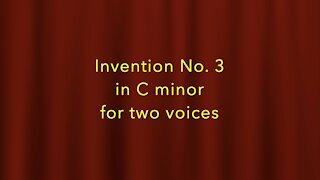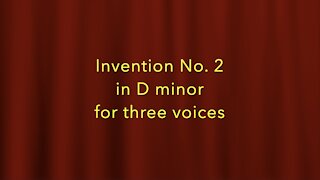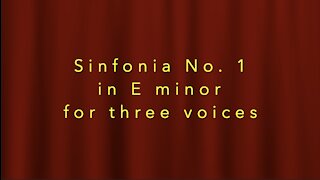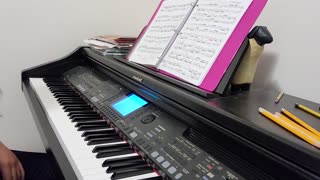Invention No. 1 in A minor for two voices by Robert W. Padgett
This two-part invention was composed by Robert W. Padgett in 1990 as a private exercise in invertible counterpoint. The upper voice announces the motive in the tonic key of A minor that quickly overlaps itself at the octave as a brief stretto. An episode consisting of a modulation sequence arrives at a half cadence in bar 4 in E major. The motive is then inverted in bar 5 by the upper voice followed by a partial restatement of the original motive by the lower voice in bar 6. This interplay between the motive’s inversion and its original form continues through bar 10 before a new episode modulates sequentially to a cadence in bar 13 with a statement by the lower voice of the original motive in the relative key of C major. An inversion of the original episodic sequence from bar 2 follows with slight alterations that cycle through a series of contrasting keys. A second interplay begins in bar 17 between the motive’s inversion in the lower voice followed by its partial restatement in the upper voice. The exchange of motive and countermotive by the upper and lower voices is an example of invertible counterpoint. In bar 27, an extended version of the motive begins in F minor before morphing back into A minor with the same modulation formula from bar 2 that redirects to a perfect cadence in the tonic key with a final Picardi third in A major.
-
 1:32
1:32
Padgett Music Studio
3 years agoInvention No. 3 in C minor for two voices by Robert W. Padgett
40 -
 1:54
1:54
Padgett Music Studio
3 years agoInvention No. 2 in D minor for three voices by Robert W. Padgett
80 -
 2:11
2:11
Padgett Music Studio
3 years agoSinfonia No. 1 in E minor by Robert W. Padgett
58 -
 2:29
2:29
Padgett Music Studio
3 years ago $0.01 earned“Turn to the Lord” by Robert W. Padgett
702 -
 2:37
2:37
HSWCoreCultureEntertainment
4 years agoStolen Voices, Buried Secrets: Robert Lustig
26 -
 4:40
4:40
HannahSturtz
3 years agoInvention No. 13 - Bach
116 -
 1:16
1:16
brianjamesgage
3 years agoJ.S. Bach, Invention No. 1
34 -
 2:23
2:23
HSWCoreCultureEntertainment
4 years agoStolen Voices, Buried Secrets: Who Killed Robert?
21 -
 4:10
4:10
Robert Armand
3 years agoAin't No Grave - Robert Armand
256 -
 1:11
1:11
scottfortney
3 years agoScott Fortney Character Voices
1902